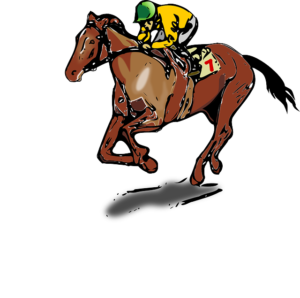Why is an uncontested lead an advantage in a horse race?
Racing commentaries often refer to the fact that a front-running horse was allowed an uncontested lead, which can sometimes, but not always, prove to be an advantage. Lack of competition for the lead allows a front-runner to dictate its own fractions, without setting too frenetic a pace and, thereby, expending too much energy.
Obviously, every racehorse has limitations to its speed and stamina. Most can maintain top speed for two furlongs or so, but no further, which is why front-runners who set off ‘lickety split’ at the start of a race – either by their own volition, or because they are ‘harried’ for the lead – often fade out of contention when the race begins in earnest.
Conversely, if a front-runner is allowed to take the field along at moderate, or even slow, pace, it will be able to maintain its effort for longer. If a front-runner can maintain, or quicken, its speed, such that it covers the last two furlongs of a race in, say, 24 seconds, it stands to reason that a horse that is a few lengths off the pace must cover the distance in, say, half a second faster in order to win.
 Timeform, the company, is nowadays a wholly-owned subsidiary of the Paddy Power Betfair (PPB) Group which is, in turn, part of Flutter Entertainment plc. Based in Halifax, West Yorkshire, Timeform was founded as a publishing company by the late Phil Bull – once billed ‘racing’s most celebrated and successful punter’ – in 1948. Until December, 2020, when it closed the remaining elements of its mail order service, Timeform publications included the ‘Racehorses’ and ‘Chasers & Hurdlers’ annuals and the weekly ‘Black Book’. However, in recent years, Timeform has focussed on its digital customer base, so much so that those celebrated publications are now a thing of the past.
Timeform, the company, is nowadays a wholly-owned subsidiary of the Paddy Power Betfair (PPB) Group which is, in turn, part of Flutter Entertainment plc. Based in Halifax, West Yorkshire, Timeform was founded as a publishing company by the late Phil Bull – once billed ‘racing’s most celebrated and successful punter’ – in 1948. Until December, 2020, when it closed the remaining elements of its mail order service, Timeform publications included the ‘Racehorses’ and ‘Chasers & Hurdlers’ annuals and the weekly ‘Black Book’. However, in recent years, Timeform has focussed on its digital customer base, so much so that those celebrated publications are now a thing of the past. Unsurprisingly, the leading owner in the history of the Cheltenham was the owner of the most successful horse in the history of the ‘Blue Riband’ event, Golden Miller. Golden Miller achieved legendary status by winning the Cheltenham Gold Cup five years running between 1932 and 1936, but his owner, the Honourable Dorothy Paget, became almost as famous, or infamous, for her eccentric, often tyrannical behaviour. The richest unmarried woman in the country, at one point, Miss Paget would win the Cheltenham Gold Cup again with Roman Hackle in 1940 and Mont Tremblant in 1952, for a total of seven victories; her success did not prevent her being utterly difficult and falling out with her trainers on a regular basis.
Unsurprisingly, the leading owner in the history of the Cheltenham was the owner of the most successful horse in the history of the ‘Blue Riband’ event, Golden Miller. Golden Miller achieved legendary status by winning the Cheltenham Gold Cup five years running between 1932 and 1936, but his owner, the Honourable Dorothy Paget, became almost as famous, or infamous, for her eccentric, often tyrannical behaviour. The richest unmarried woman in the country, at one point, Miss Paget would win the Cheltenham Gold Cup again with Roman Hackle in 1940 and Mont Tremblant in 1952, for a total of seven victories; her success did not prevent her being utterly difficult and falling out with her trainers on a regular basis.